Did you know you can grow everything you need for a fresh salad on your deck, patio, or porch? As long as you have an area that gets a good amount of sun, you’re in luck. And growing veggies in containers is easier than you think.
Container gardening offers great ease and convenience: no weeds to speak of, fewer pests and diseases, and it is generally much more efficient, considering our busy lifestyles. Those with no outdoor green space find they can grow almost all the crops they would have wanted to plant in a conventional garden. So forget about rototillers and wheelbarrows, and pick up your trowel. We’re going to tell you how to get started with container gardening!
Growing Veggies in Containers: 4 Simple Steps
1. Choosing a Container
The only qualities required for a planting container are solid sides and enough holes in the bottom for water to drain freely. You’ll want to consider how deep the container needs to be because different crops have different size root systems. What you want is a container deep enough for the root systems of the crops you intend to plant; this varies between 9 and 18 inches. Here is the recommended depth for several common crops:
| 9"-12" | 12"-14" | 14"-16" | 16"-18" |
|---|---|---|---|
| Beets | Broccoli | Cherry Tomatoes | Beans |
| Leaf Lettuce | Cabbage | Eggplant | Cucumbers |
| Onions | Cauliflower | Peas | Potatoes |
| Radishes | Peppers | Summer Squash | |
| Spinach | Tomatoes |
Containers can be as diverse as those who use them: some people turn their junk into containers by drilling holes in broken watering cans or using frayed baskets. Others put as much care into their choice of containers as they do any other home furnishing, and purchase artistically designed containers. Some people like to grow their veggies from hanging baskets. Among those designed for planting, the ones using coco fiber are the best.
2. Add Potting Soil
When growing veggies in containers, you should always use potting soil – it’s designed to provide a greater amount of aeration than even the best dirt can offer, which is a key factor when growing in containers.
3. Sun, Water, and Wind
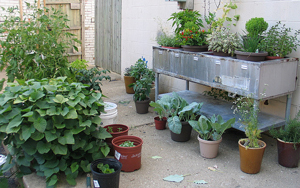 Keep your containers in the area where they will get the most hours of direct sun each day. If the sun really beats down in your region, avoid black containers that might overheat due to sun absorption. Water regularly, following the directions that came with the plant, but know that your plants might require different watering frequency than with a conventional garden. If you live in an area subject to high winds you might want to secure your containers to prevent them from getting knocked over. To ensure good drainage, be sure that the bottom of your container is raised up from the ground a little bit. This can easily be done by placing small wood blocks under your container. (But be careful not to block the holes.)
Keep your containers in the area where they will get the most hours of direct sun each day. If the sun really beats down in your region, avoid black containers that might overheat due to sun absorption. Water regularly, following the directions that came with the plant, but know that your plants might require different watering frequency than with a conventional garden. If you live in an area subject to high winds you might want to secure your containers to prevent them from getting knocked over. To ensure good drainage, be sure that the bottom of your container is raised up from the ground a little bit. This can easily be done by placing small wood blocks under your container. (But be careful not to block the holes.)
4. Pots, Soil, Plants: Action!
You are now ready to plant. You can either grow your veggies from seed, or order them as plants. For beginner gardeners, we recommend getting the pre-started plants because it’s the easiest way to go.
If you go with pre-grown plants from GrowJoy, know that we guarantee each plant to arrive healthy and ready to thrive. We offer a huge selection, and we are proud of our unique way of packaging plants for shipping.
Happy container growing!

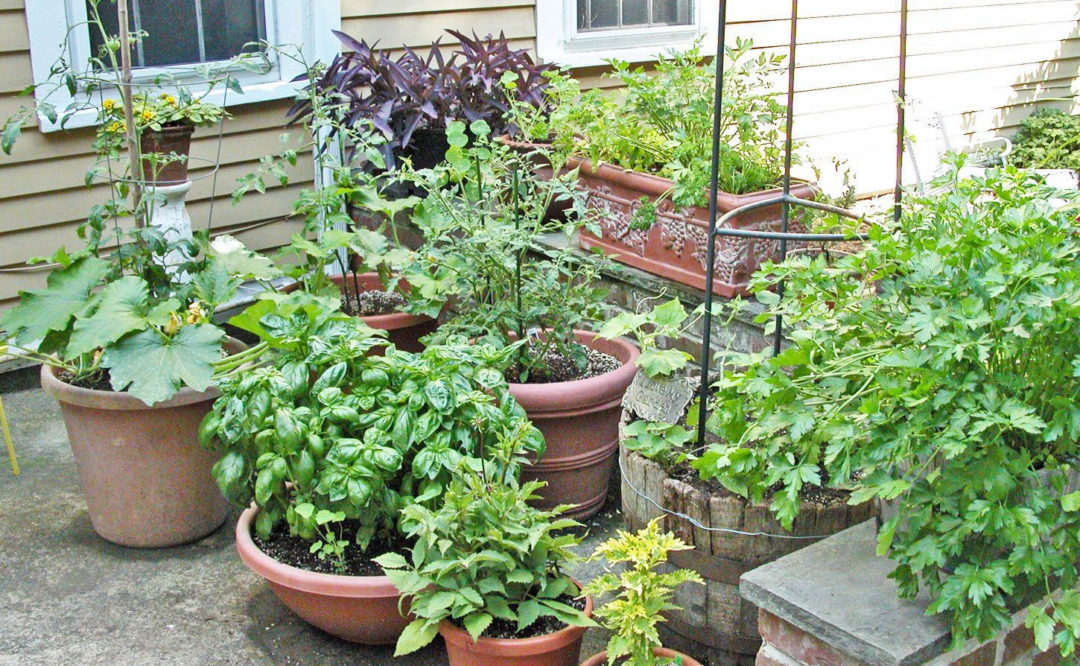
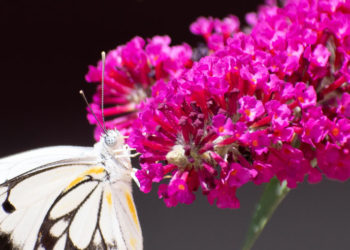
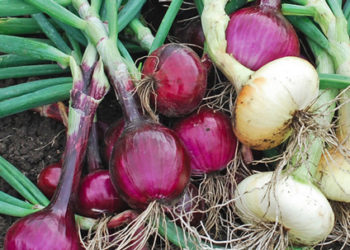
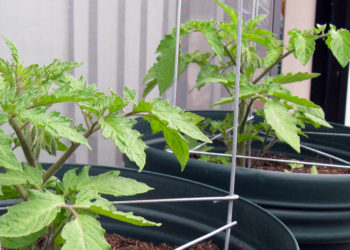
No Comments